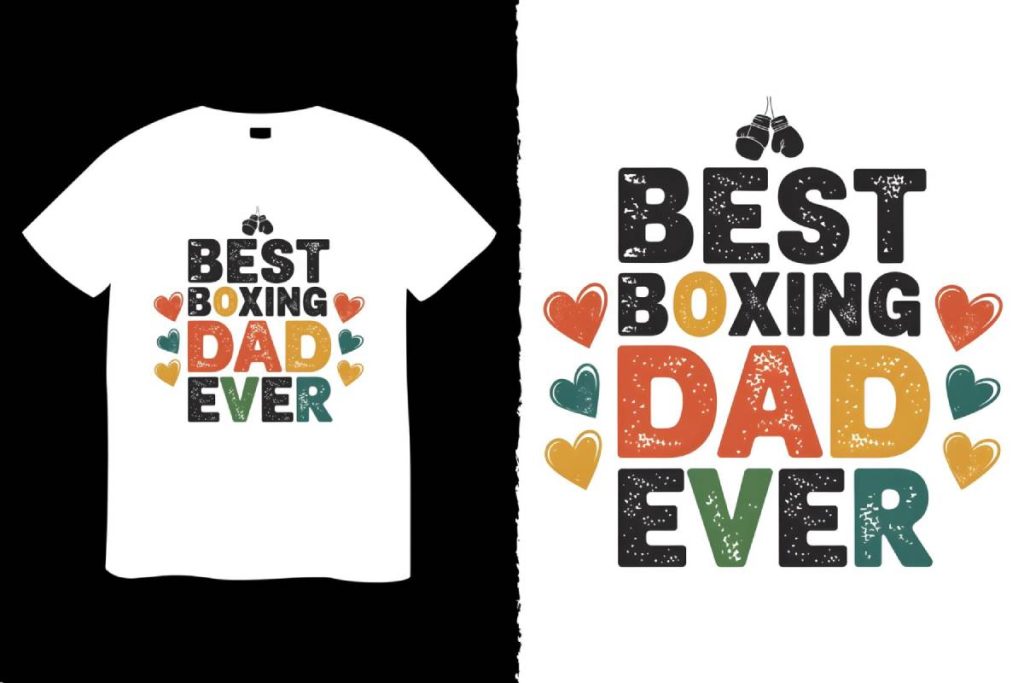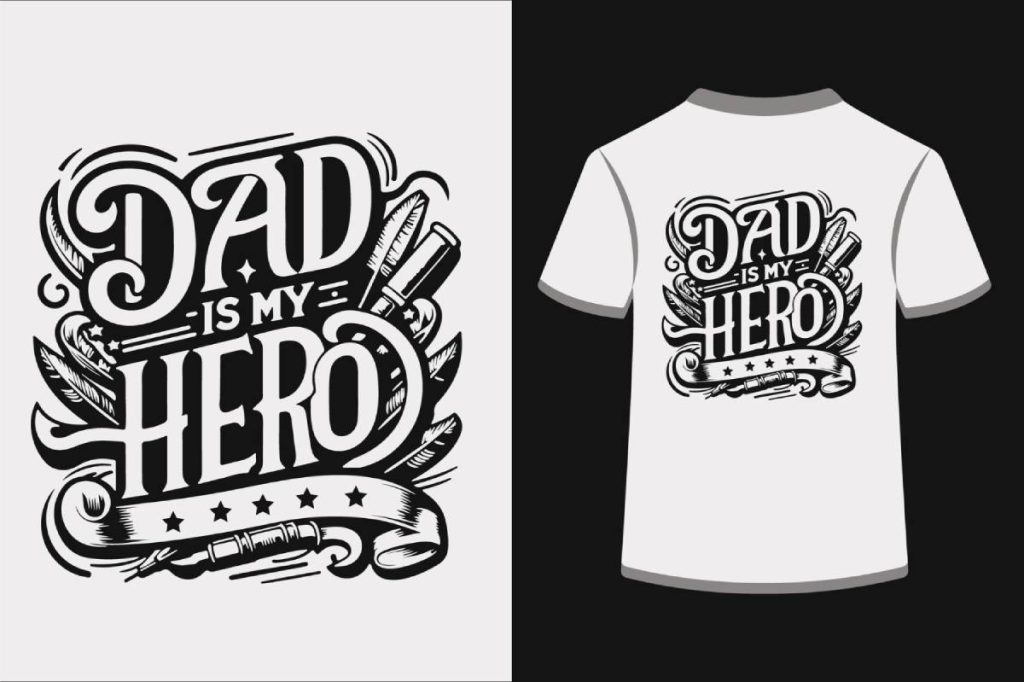DTF Transfers, or Direct-to-Film transfers, have emerged as a game-changer in the realm of custom apparel printing, revolutionizing how designs are applied to garments. This innovative technique employs advanced fabric transfer technology to create sharp, vibrant prints that maintain their quality over time. As e-commerce customization gains momentum, the adoption of DTF printing is facilitated by its cost-effectiveness and quick turnaround times, making it a preferred choice for both startups and established businesses. Furthermore, DTF Transfers align with sustainable printing practices, utilizing eco-friendly inks that resonate with environmentally conscious consumers. In this blog post, we aim to explore the intricacies of DTF printing, its benefits, and the trends shaping the future of custom apparel.
Direct-to-Film printing, commonly referred to as DTF printing, is reshaping the landscape of fabric decoration and textile design. This modern approach to printing allows for high-quality transfers that adhere seamlessly to various fabric types, offering versatility and durability that surpass traditional methods. As customized clothing becomes increasingly popular, this innovative printing technology opens new doors for creative expression and personalization in apparel. Additionally, with the rise of online retail, businesses can leverage the advantages of DTF transfers to efficiently meet consumer demand while adopting sustainable printing practices. This article will provide a comprehensive overview of DTF Transfers, spotlighting their benefits, developments, and future prospects.
Understanding DTF Transfers: A Game Changer in Custom Apparel Printing
DTF (Direct-to-Film) transfers have emerged as a revolutionary technology in the realm of custom apparel printing. This innovative printing method allows for high-resolution designs to be printed onto a special transfer film, which is then heat-pressed onto various fabric types. Unlike traditional printing techniques that are often limited by the fabric types they can print on, DTF transfers can be applied to a myriad of materials including cotton, polyester, and blends, expanding the creative possibilities for apparel businesses. As the demand for unique and personalized clothing continues to rise, DTF printing offers an effective and versatile solution tailored to meet consumer needs.
The success of DTF transfers stems from their ability to produce bold, vibrant prints with exceptional durability. These transfers are not only resistant to fading and cracking, but they also perform well through multiple washes, ensuring that the artwork remains intact. This durability makes DTF printing particularly attractive to businesses looking to provide high-quality products that can withstand the test of time. Additionally, as more companies acknowledge the importance of sustainable printing practices, DTF technology stands out due to its eco-friendly options, making it an attractive choice for businesses committed to reducing their environmental impact.
Recent Trends Driving DTF Transfers Forward
The landscape of DTF printing is rapidly evolving, driven by recent trends that emphasize personalization and customization. With consumers seeking unique designs that reflect their individual styles, businesses are investing heavily in DTF technology to enhance their offerings. The rise of e-commerce platforms has made it easier for customers to explore custom apparel options, leading to increased demand for high-quality DTF prints. This trend not only caters to individual preferences but also allows small businesses to compete in the growing market, providing them with the tools to offer tailored apparel solutions.
Another significant trend is the cost-effectiveness of DTF printing. As the barriers to entry are lowered, more entrepreneurs are entering the custom apparel industry equipped with DTF technology. This affordability allows for quick iterations on designs and faster production times, enabling businesses to respond swiftly to changing fashion trends. The versatility of DTF printing also means it can cater to a broad spectrum of products—ranging from t-shirts to sports jerseys—ensuring that businesses can expand their product lines without heavy financial constraints. This adaptability is crucial in today’s fast-paced retail environment.
The Advantages of DTF Transfers for Custom Apparel
DTF transfers offer several compelling advantages that make them a preferred choice for custom apparel printing. One of the primary benefits is the exceptional quality and clarity of the prints. DTF technology allows for intricate designs to be reproduced with precision, ensuring that every detail of the artwork is visible and vibrant. This high-quality finish is particularly appealing for businesses looking to create standout products that catch the eye of prospective customers. Additionally, the durability of DTF prints ensures that the garments maintain their appearance even after multiple washes, distinguishing them from other printing methods.
The efficiency of DTF printing is another significant advantage that appeals to businesses of all sizes. The streamlined process results in faster production times, enabling quick turnarounds that are essential for meeting consumer demands in today’s market. Businesses can fulfill large orders in short periods, which is particularly beneficial during peak seasons like holidays or special events. Moreover, the eco-friendly inks commonly used in DTF printing align with the increasing consumer demand for sustainable practices, allowing companies to market themselves as environmentally conscious while still delivering high-quality products.
Navigating the Challenges of DTF Printing
While DTF printing presents numerous advantages, it also comes with specific challenges that businesses must navigate. One of the main obstacles is the initial capital investment required for specialized printers and heat transfer equipment. Small business owners or startups may find it daunting to allocate substantial resources toward acquiring the necessary technology, which can hinder their ability to enter the market. Moreover, the technical complexity of managing the DTF printing process—such as adjusting temperature settings and pressure—can be overwhelming for novices, emphasizing the need for adequate training and support.
Additionally, the learning curve associated with DTF printing can pose a significant barrier to entry. As businesses strive to produce high-quality prints, they must invest time in mastering the intricacies of the process. From selecting the right transfer films to ensuring precise application, understanding these aspects is crucial for achieving optimal results. Companies that offer comprehensive training programs or workshops for their employees can streamline this learning process, helping to mitigate the challenges associated with DTF printing while maximizing the technology’s potential.
The Future Outlook for DTF Printing Technology
The future of DTF printing technology is an exciting prospect, as continuous advancements promise to refine the printing process further. Industry experts predict that as manufacturers innovate, improvements in printer designs, inks, and overall efficiency will emerge. This evolution is anticipated to simplify operations and reduce equipment costs, making DTF printing more accessible for small businesses and new entrants to the market. By leveraging advancements in technology, businesses can enhance their production capabilities while also delivering higher quality outputs.
Furthermore, the increasing incorporation of artificial intelligence into the manufacturing landscape could revolutionize DTF printing. AI could lead to smarter production systems capable of streamlining workflows and minimizing human errors. As smart technologies gain traction, they will further optimize customization capabilities, tailoring print strategies to consumer preferences more effectively. These technological advancements are expected to transform DTF printing from a niche solution into a mainstream option within the custom apparel printing realm, shaping the future of personalized fashion.
Embracing Sustainable Printing Practices with DTF Transfers
As sustainability becomes a critical concern for consumers, embracing eco-friendly practices in the custom apparel printing industry has never been more relevant. DTF transfers provide an excellent opportunity for businesses to adopt sustainable printing technologies. The use of water-based inks in DTF printing minimizes environmental impact, aligning with the growing demand for products that prioritize eco-consciousness. Companies that commit to using sustainable practices not only enhance their brand reputation but also appeal to the increasingly environmentally aware customer base seeking out brands that share their values.
In addition to using sustainable inks, the DTF printing process itself generates less waste compared to traditional printing methods. This reduction in waste aligns with the principles of sustainable fashion, encouraging businesses to adopt processes that minimize their ecological footprint. By focusing on sustainable printing practices, companies can position themselves as leaders in the industry, attracting an eco-friendly clientele while contributing positively to the preservation of the environment. The move toward a more sustainable approach is not just beneficial for the planet; it can also open new avenues for growth and differentiation in a competitive market.
Frequently Asked Questions
What are DTF Transfers and how do they work in custom apparel printing?
DTF Transfers, or Direct-to-Film transfers, involve printing a design onto a special film that is later applied to fabric. This process uses heat and pressure to transfer vibrant and detailed artwork onto various apparel materials, making it a popular method in custom apparel printing.
What benefits do DTF Transfers offer compared to traditional printing methods?
DTF Transfers provide several advantages over traditional methods such as screen printing and DTG printing, including superior durability, faster production times, and compatibility with a wide range of fabrics. These benefits make DTF printing a preferred choice for custom apparel businesses aiming for high-quality results.
How sustainable are DTF Transfers in the custom apparel printing industry?
DTF Transfers can be environmentally friendly, as many printers utilize eco-friendly inks and practices. By adopting sustainable printing practices, businesses can appeal to the growing consumer demand for environmentally conscious products while using DTF technology.
Can DTF Transfers be used for e-commerce customization?
Absolutely! DTF Transfers are ideal for e-commerce customization because they allow for quick turnaround times and high-quality prints. Businesses can easily customize apparel for individual customer orders, enhancing the shopping experience with unique and personalized products.
What types of fabrics work best with DTF Transfers?
DTF Transfers are versatile and can be applied to many fabric types, including cotton, polyester, and blends. This flexibility allows custom apparel printers to offer a diverse range of products, from t-shirts to sports uniforms, using DTF printing technology.
What challenges might businesses face when adopting DTF Transfers for custom apparel printing?
While DTF Transfers offer many benefits, businesses may encounter challenges such as the initial investment in specialized printing equipment and the learning curve associated with mastering the transfer process. These elements can be barriers to entry for smaller operations or those new to the printing industry.
| Key Point | Description |
|---|---|
| Definition of DTF Printing | A process that prints designs onto a special transfer film before applying it to fabric, enabling vibrant colors and intricate designs. |
| Market Growth | The DTF printing market is expanding due to increased demand for personalized apparel. |
| Cost-Effectiveness | Low setup costs make DTF technology accessible for small businesses and startups. |
| Versatility | DTF transfers work on various fabrics, allowing for mixed-material designs. |
| Advantages of DTF Transfers | Durability, quality, speed, and efficiency, along with eco-friendly options enhance DTF printing’s appeal. |
| Challenges | Technology accessibility and a steep learning curve can limit adoption, particularly for smaller enterprises. |
| Future Outlook | Anticipated advancements in technology and integration of AI will enhance DTF printing capabilities. |
Summary
DTF Transfers are revolutionizing the custom apparel printing landscape, providing businesses with the tools necessary to meet the increasing demand for personalized fashion. With its ability to deliver high-quality, durable prints across various fabrics, DTF printing not only boosts efficiency and reduces setup costs but also fosters innovation in design. As the technology continues to evolve, it presents even greater opportunities for entrepreneurs and established companies to thrive in an increasingly competitive market.



